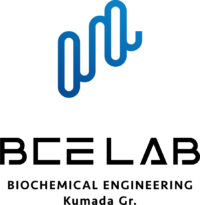Authors
Sofia De Felice, Zhanna Romanyuk, Monica Chinellato, Giulia Zoia, Sara Linciano, Yoichi Kumada, Els Pardon, Jan Steyaert, Alessandro Angelini, Laura Cendron
First author
Sofia De Felice
Corresponding author
Laura Cendron
Publication Style
Journal name Protein Science
Year
Volume, issue, pages
33, 2, e4887
Abstract
The pharmacokinetic properties of small biotherapeutics can be enhanced via conjugation to cross-reactive albumin-binding ligands in a process that improves their safety and accelerates testing through multiple pre-clinical animal models. In this context, the small and stable heavy-chain-only nanobody NbAlb1, capable of binding both human and murine albumin, has recently been successfully applied to improve the stability and prolong the in vivo plasma residence time of multiple small therapeutic candidates. Despite its clinical efficacy, the mechanism of cross-reactivity of NbAlb1 between human and murine serum albumins has not yet been investigated. To unveil the molecular basis of such an interaction, we solved the crystal structure of human serum albumin (hSA) in complex with NbAlb1. The structure was obtained by harnessing the unique features of a megabody chimeric protein, comprising NbAlb1 grafted onto a modified version of the circularly permutated and bacterial-derived protein HopQ. This structure showed that NbAlb1 contacts a yet unexplored binding site located in the peripheral region of domain II that is conserved in both human and mouse serum albumin proteins. Furthermore, we show that the binding of NbAlb1 to both serum albumin proteins is retained even at acidic pH levels, thus explaining its extended in vivo half-life. The elucidation of the molecular basis of NbAlb1 cross-reactivity to human and murine albumins might guide the design of novel nanobodies with broader reactivity toward a larger panel of serum albumins, thus facilitating the pre-clinical and clinical phases in humans.
